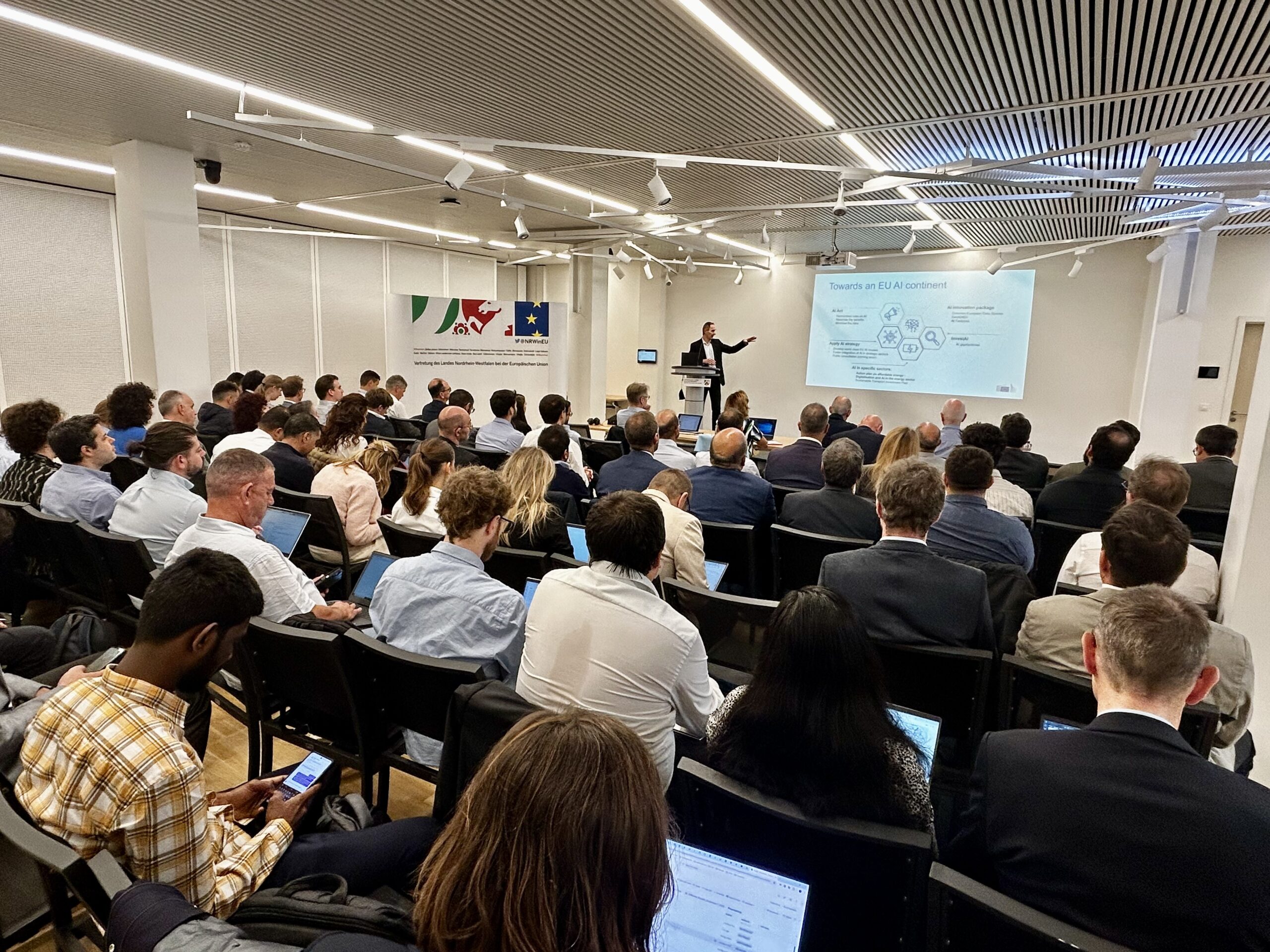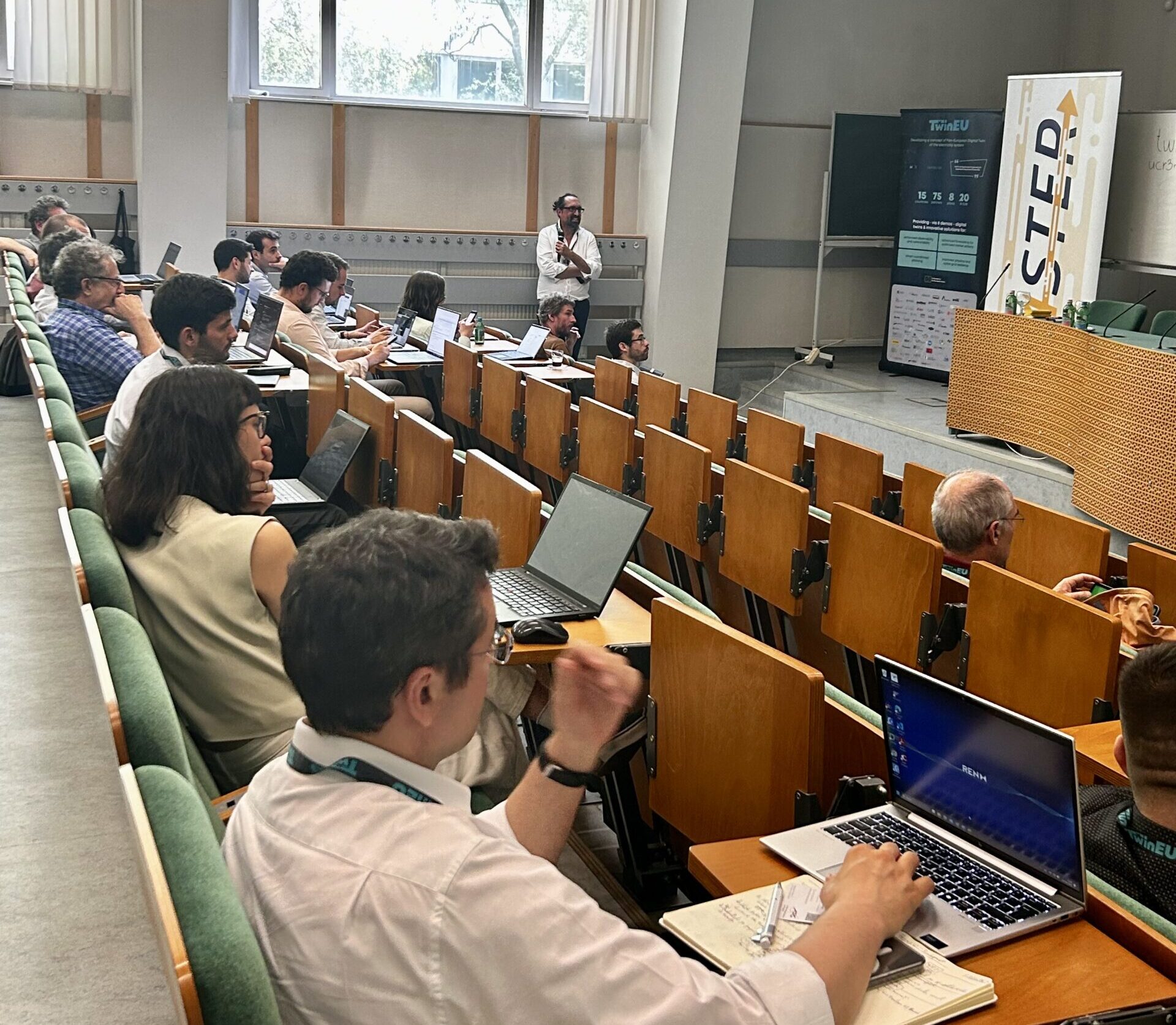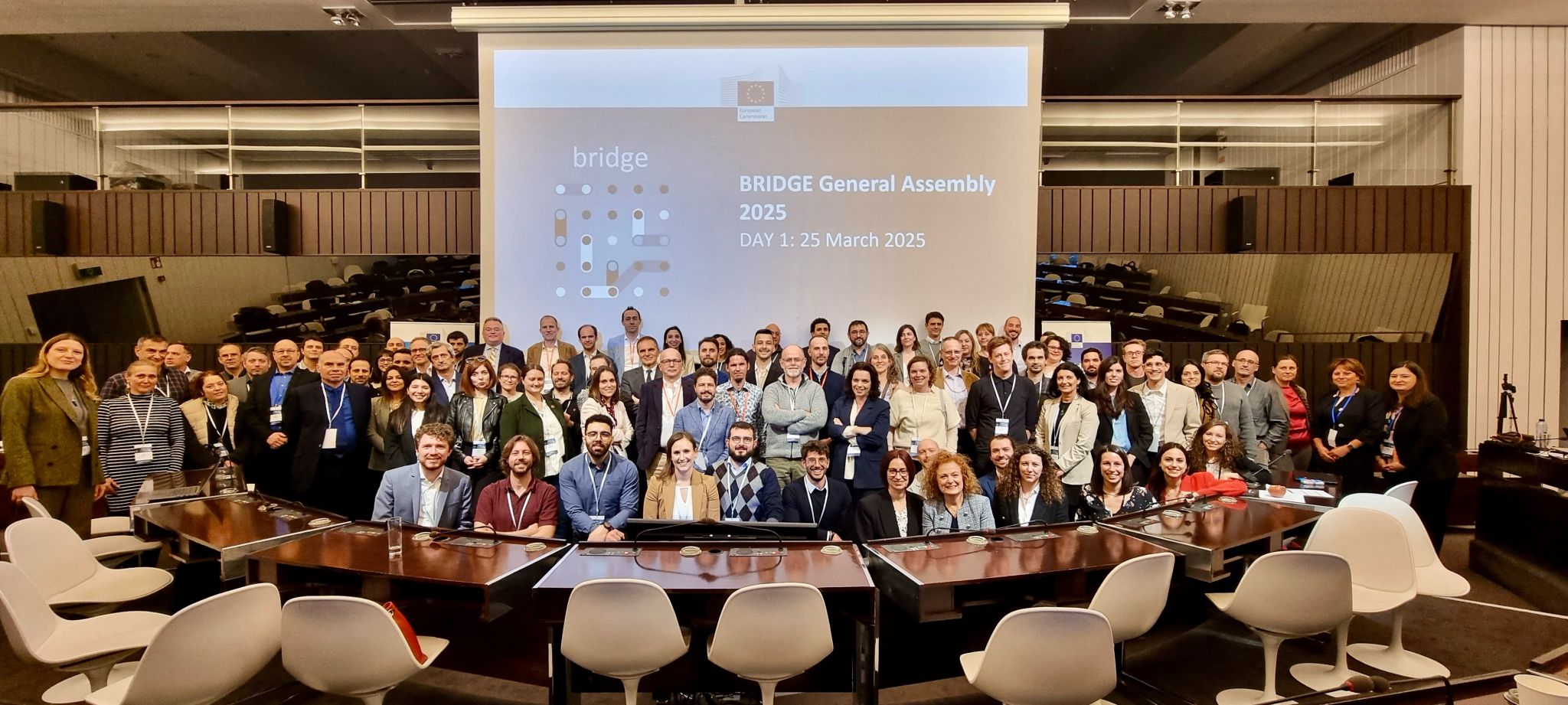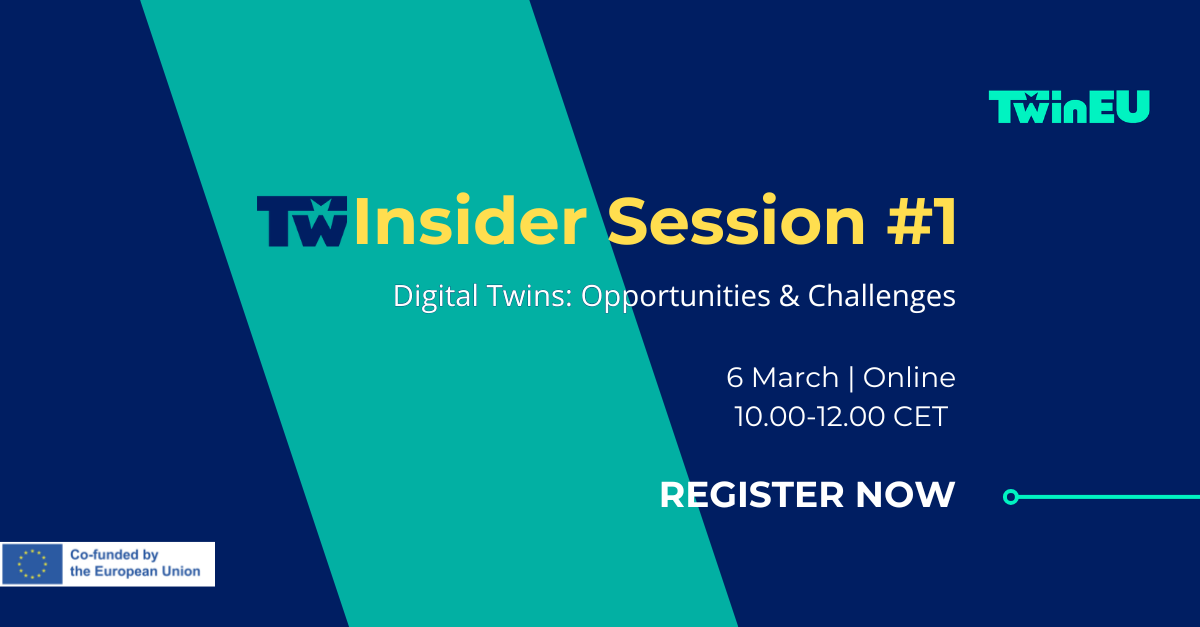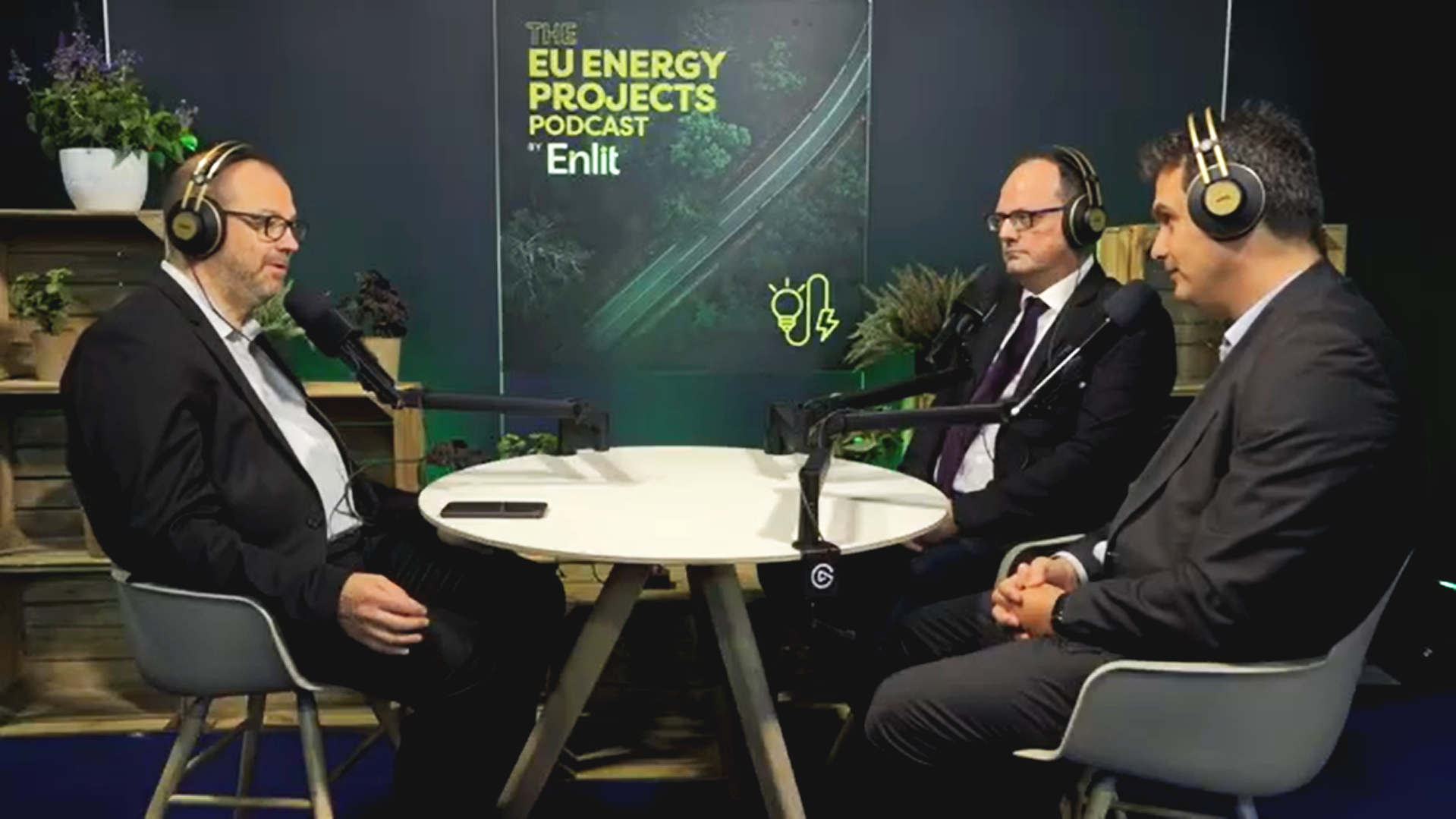Integrating different digital twin systems of the electricity value chain is one of the key objectives of the TwinEU project. An important milestone is achieved, the first version of the TwinEU data space connector was officially released to enable orchestrating services for data model sharing.
The TwinEU Data Space (DSP) Connector is the key technical enabler for implementing a Data Space Framework for the Digital Twin Federation.
The TwinEU DSP Connector is part of the TwinEU Digital Twin Federator that enables:
- Integrating heterogeneous Digital Twin systems
- Orchestrating services for data and models sharing
- Incorporating real-world data to enhance simulation and analysis capabilities
The TwinEU DT Federator extends and improves the OneNet Data Space Framework an open-source Data Space solution tailored for the Energy domain, which supports the standardized data exchange among energy stakeholders at any level.

In particular, the TwinEU DSP Connector plays a crucial role in driving efficient data integration and exchange across the energy sector. It implements the core features for a completely decentralized end-to-end data exchange while maintaining full control over data access and usage. In addition, it communicates with TwinEU Middleware for onboarding and data service discovery.
The first version of the TwinEU DSP Connector implements the Data Space Protocol v2024.1 for ensuring a high level of interoperability in the context of Energy Data Space. All the Data Space Protocol (DSP) modules and interfaces were successfully integrated into this version of the Connector, with a dedicated UI and a new Data Application, which allow the integration of legacy systems.
The main functionalities of the first version of the TwinEU DSP Connector are:
- Configuration (Onboarding)
- Creation of Data Offering (Indexing)
- Data Catalogue (Discovery)
- Subscription and access management (Negotiation)
- Provisioning and Consuming Data (Data Exchange)
This initial step consists of setting up the data space environment via the OneNet Connector. It includes configuring the necessary endpoints, defining participant identities and ensuring that all participants are properly onboarded into the Data Space. This step ensures that the data space is secure and ready for use.
Creation of Data Offering (Indexing)
In this step, Data Providers create and index their data offerings. This involves describing the data, setting metadata, and making it discoverable within the OneNet Middleware. Indexing helps in organizing the data so that it can be easily searched and accessed by users through the Data Catalogue.
Data Catalogue (Discovery)
The Data Catalogue is a centralized repository where all indexed data offerings are listed. Users can browse, search, and discover data sets that are relevant to their needs. This step is crucial for facilitating easy access to data and ensuring that users can find the data they need efficiently. Within the OneNet Middleware, the Data Catalogue also provides categorization mechanisms and a set of vocabularies to be applied to any data offering. The Data Catalogue is implemented in a standardized way, following the Data Space Protocol specifications. The DSP indicate the Catalogue as a collection of entries representing Datasets and their Offers that is advertised by a Provider Participant. The DSP Catalogue uses the standard DCAT model.
Subscription and access management (Negotiation)
Once Data Consumers find the data they need, they can subscribe to the data offerings. This step involves negotiating access terms, such as usage rights, and data sharing agreements. Effective subscription and access management ensure that data is shared securely and in compliance with agreed-upon terms. The negotiation step is implemented in accordance with the Data Space Protocol negotiation steps and workflow, which includes six distinct steps.
Provisioning and Consuming Data (Data Transfer)
In the final step, the subscribed data is provisioned to the users. This involves the actual transfer of data from the provider to the consumer, ensuring seamless and efficient data exchange in an end-to-end manner, without passing data through any central system. In the DSP protocol the Data Transfer can be implemented in two-way approach:
- Push process – provider push data on consumer service
- Pull process – consumer request data to provide
The TwinEU DSP is released as open-source, and it is already available for testing and validation phase of the TwinEU project. Source code and documentation will be available soon, so stay tuned!

